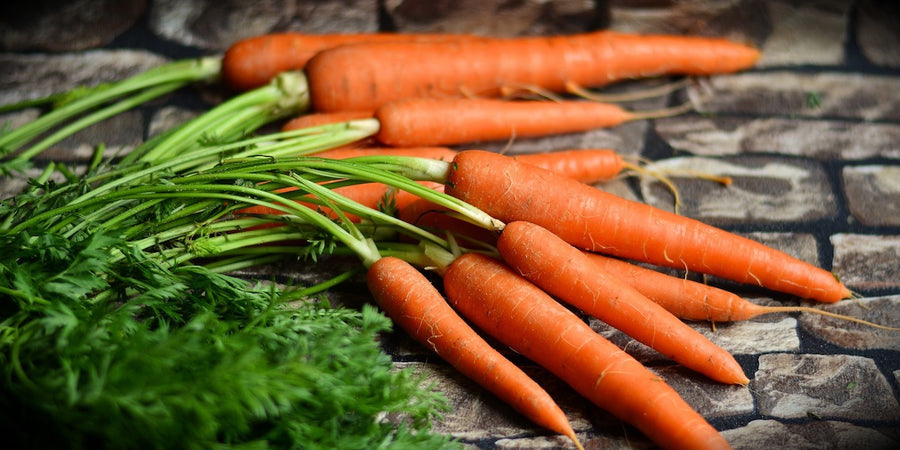April Monthly Growing Guide

With April showers about, this won’t dampen the mood of a gardener. Too busy organising seed trays and seedlings in greenhouses and when sunshine’s about, preparing the ground to receive plants that will soon fill the brown spaces in the kitchen garden.
April job list
Indoors:
Nights are still too cold for tender vegetable and herb plants and are best kept indoors to continue growing. The seedlings that have germinated in the heated propagator are ready to pot on into individual pots, but will still be required to nestle on a heat mat under grow-lights.
Leafy herbs such as Basil, Coriander, and Dill can be sown this month. Sow every couple of weeks for an extended supply.
Brassica Tip: If sowing or transplanting brassicas into a multi-purpose compost, add a little garden lime to the compost. Put a layer of compost in the potting tray and dust it with enough lime to whiten it. Brassicas like a high pH (low acidity) and lime increases the pH of the compost.
And if you want your own liquid fertiliser, then sow Comfrey this month too. Need some advice about how to make your own Comfrey liquid fertiliser then have a read of our blog article HERE.
Greenhouse/Coldframe:
Seed trays and pots that were washed and sterilised earlier in the year are finding their way into the greenhouse just as fast as they were put away. Use small individual pots to sow Courgette, Cucumber, melon, Pumpkin and Squash seeds. This will help minimise root disturbance finally placing the pots in propagators with lids to aid with speedy germination. Place French and Runner Bean seed varieties in root trainers or deep module trays. If short of space in greenhouse seed or module trays with Turnip, Chard, Kale and Pak choi can be placed in coldframes.
Broad Beans can be sown in pots this month and left to germinate in an unheated greenhouse or coldframe.

Outdoors:
Although days are warming up, the cold nights still prevail. Using horticultural fleece as cover to newly sown seeds like Broad Beans, Carrots, Radish, Lettuce and even Kale will ensure success in germination rate.
Sow directly Brussels Sprouts, Leeks, Lettuces, Peas, and Spinach.
Build supports for pea and bean plants now.
Thin Carrot seedlings to give your crops plenty of space to grow. Best to do this in the evening when carrot fly is less active.
Plant out second early variety of potato and earth up emerging plants of first early potato variety not only encourages to grow taller but helps protect the leaves from getting frost bitten.
If you have a Comfrey bed and it has sprung back, the first cut laid in the trench under the potatoes will provide nutrition to get them off to a good start.
On the subject of Comfrey, if you make Comfrey Tea/fertiliser it will help you to a great crop when you use it on your potatoes. Many novice growers wonder why they have small crops of potatoes and most often this is just down to lack of food for this hungry crop.
If conditions are favourable you can start sowing Chervil, Coriander and Dill outdoors. Just make sure the risk of frosts has passed and temperatures are consistent.
Apple and Pear tree are susceptible to codling moth damage. Hang pheromone traps to attract the male moths. Prune cherry and plum fruit trees once flower buds and leaves start to appear.
General tasks:
On a dry day, turn the compost to aid in decomposing and any pile that is ready to use should be spread prior to planting out.



